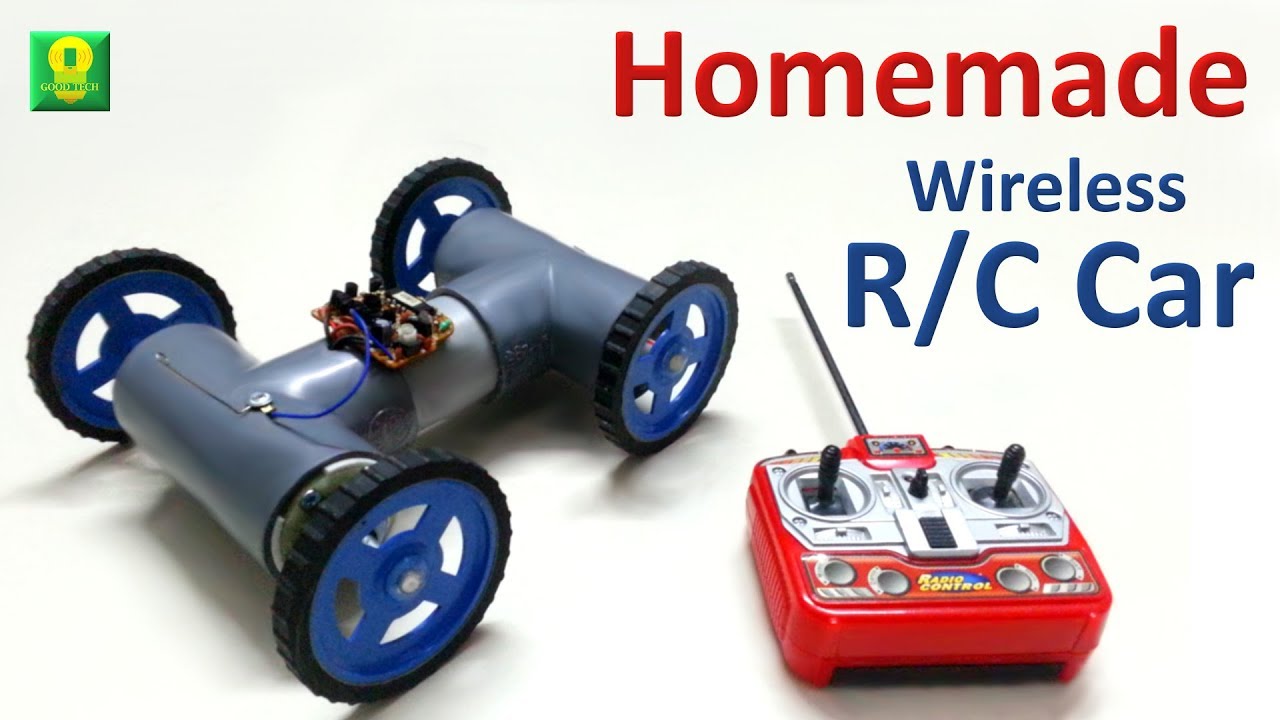Have you ever dreamed of controlling a miniature car with the push of a button? Well, now you can! In this easy DIY guide, we'll walk you through making your very own remote-controlled car. It's a fun project for beginners and a great way to bond with friends or family. Plus, you’ll get to learn about electronics and basic mechanics while having a blast. So, grab your tools, and let’s get started!
Materials Needed

To create your remote-controlled car, you’ll need a mix of common materials and some specialized components. Here’s a comprehensive list to help you gather everything you need:
- Chassis: You can use a small cardboard box or buy a pre-made chassis online.
- Wheels: Look for small toy car wheels or purchase them from a hobby store.
- Motors: Two DC motors for driving the wheels. Make sure they come with gears for better speed control.
- Batteries: A battery pack (like AA batteries) to power your motors.
- Remote Control Module: A simple infrared (IR) or radio frequency (RF) remote control kit. You can find inexpensive options online or at electronics stores.
- Wires: Several jumper wires to connect everything together.
- Soldering Kit: (Optional) If you prefer a more permanent connection, a soldering iron and solder will be helpful.
- Switch: A small toggle or push-button switch to turn your car on and off.
- Glue or Tape: Hot glue or strong adhesive tape to hold components in place.
- Tools: Scissors, wire cutters, and a screwdriver for assembly.
Once you have all these materials, you're ready to start building your remote car! Each part contributes to the overall function, so ensure you have everything on hand before diving into the assembly process. Trust me, gathering all your materials in one go will save you time and keep the excitement going!
Also Read This: How to Make Easy Pop Up Cards: Creative Card Making on Dailymotion
3. Step-by-Step Instructions
Building your own remote car might sound daunting, but with a little patience and the right materials, it can be an incredibly rewarding project. Here’s a straightforward guide to get you started:
Materials You’ll Need:
- RC car kit or a toy car
- Remote control transmitter and receiver
- Rechargeable battery pack
- Motor (if not included in the kit)
- Wires and connectors
- Tools: screwdriver, soldering iron (if necessary), and wire cutters
Step 1: Preparing the Car
Start by disassembling your toy car carefully. If you’re using a kit, follow the instructions to assemble the chassis. Make sure you have access to the interior, where the electronics will go.
Step 2: Installing the Motor
If your kit doesn’t come with a motor, you’ll need to install one. Connect the motor to the wheels using gears or a direct drive system. Ensure it’s secure and aligned properly for smooth movement.
Step 3: Wiring the Receiver
Take your remote control receiver and connect it to the motor. This usually involves connecting the positive and negative wires from the battery to the receiver, then linking the receiver to the motor. Don’t forget to follow the color coding for each wire!
Step 4: Powering Up
Attach the rechargeable battery pack to the receiver. Make sure everything is snug and secure. You can use tape or zip ties to keep everything in place. Double-check your connections before powering it on.
Step 5: Testing Your RC Car
Now that everything is set up, it’s time for a test drive! Power on the remote and the car. Try moving it forward, backward, and turning. If it doesn’t work as planned, check your connections. Sometimes a loose wire can cause problems.
Once you’re satisfied with your car's functionality, you can secure the body back on if you’ve taken it apart. Enjoy your newly built remote car!
Also Read This: How Pepsi Is Made: Behind-the-Scenes Videos on Dailymotion
4. Tips for Enhancing Your Remote Car
Now that you’ve built your own remote car, you might be looking for ways to make it even cooler! Here are some fun tips to enhance your ride:
1. Custom Paint Job
Give your car a unique look with a custom paint job. Use spray paint or stickers to personalize it. Consider themes like racing stripes or your favorite colors!
2. Upgrade the Speed
If you want to make your car faster, look into upgrading the motor. A stronger motor can significantly improve speed, but be careful—too much power can damage the car.
3. Add LED Lights
Adding LED lights can make your car stand out, especially at night. You can wire them to turn on with the car, creating a cool glow as it races around.
4. Experiment with Different Tires
Try different tires for various terrains. Soft tires work great for smooth surfaces, while rougher tires can help with off-road adventures. A change in tires can dramatically affect performance!
5. Incorporate a Camera
For the tech-savvy, consider adding a small camera to capture the car’s journey. It’s a fun way to create videos and share your experience with friends. Just ensure the camera is lightweight and securely mounted.
By following these tips, you can take your DIY remote car from simple to spectacular. Enjoy the thrill of racing your customized creation!
Also Read This: Is Dailymotion Free to Sign Up and Use? Everything You Should Know
5. Common Mistakes to Avoid
Embarking on the journey of building your own remote car can be incredibly rewarding, but it’s easy to stumble along the way. Here are some common mistakes that DIY enthusiasts often make and tips on how to avoid them:
- Neglecting the Power Supply: One of the biggest pitfalls is underestimating the importance of a reliable power source. Make sure your battery is appropriate for your motor's requirements. Using a battery with insufficient voltage can lead to sluggish performance or complete failure.
- Ignoring Weight Distribution: Many ambitious builders overlook how the placement of components affects balance. If your car is too front-heavy or back-heavy, it might flip over or struggle to steer. Test different placements for the motor and battery until you find a balanced setup.
- Skipping the Testing Phase: It’s tempting to rush to the finish line, but skipping thorough testing can lead to disappointment. Make sure to test each component individually before assembly. This way, you can troubleshoot issues early on instead of dealing with a broken car after all your hard work.
- Overcomplicating the Design: While it’s great to have grand ideas, a complicated design can lead to headaches. Start simple! A basic remote car can be modified and upgraded over time. Focus on making sure it runs smoothly before adding extra features.
- Forgetting About Control Range: If your remote control has a limited range, your car might not respond when too far away. Test the range of your remote beforehand and adjust your setup to ensure reliable communication between the remote and the car.
By being aware of these common pitfalls, you can navigate the construction process more smoothly and enjoy the satisfaction of a successful DIY project. Remember, it’s all part of the learning experience!
6. Conclusion
Creating your own remote car is not just a fun and engaging project, but it also offers a fantastic opportunity to dive into the world of electronics and engineering. Whether you’re a complete beginner or have some experience, this DIY guide provides a solid foundation to build upon.
As you wrap up your project, consider the following:
- Celebrate Your Achievement: No matter how your car performs, take a moment to appreciate what you’ve created. Building something from scratch is an accomplishment in itself!
- Join the Community: Don’t forget to share your success (or trials) with the DIY community online. Platforms like forums and social media groups can be a great place to get feedback, advice, and inspiration for future projects.
- Keep Learning: Building your remote car is just the beginning. Experiment with new features, explore different designs, and maybe even consider building other types of remote-controlled vehicles. Each project will enhance your skills and creativity.
In the end, the joy of creating something uniquely your own far outweighs any bumps you may encounter along the way. So, gather your tools, bring your ideas to life, and enjoy the ride—literally!
 admin
admin








